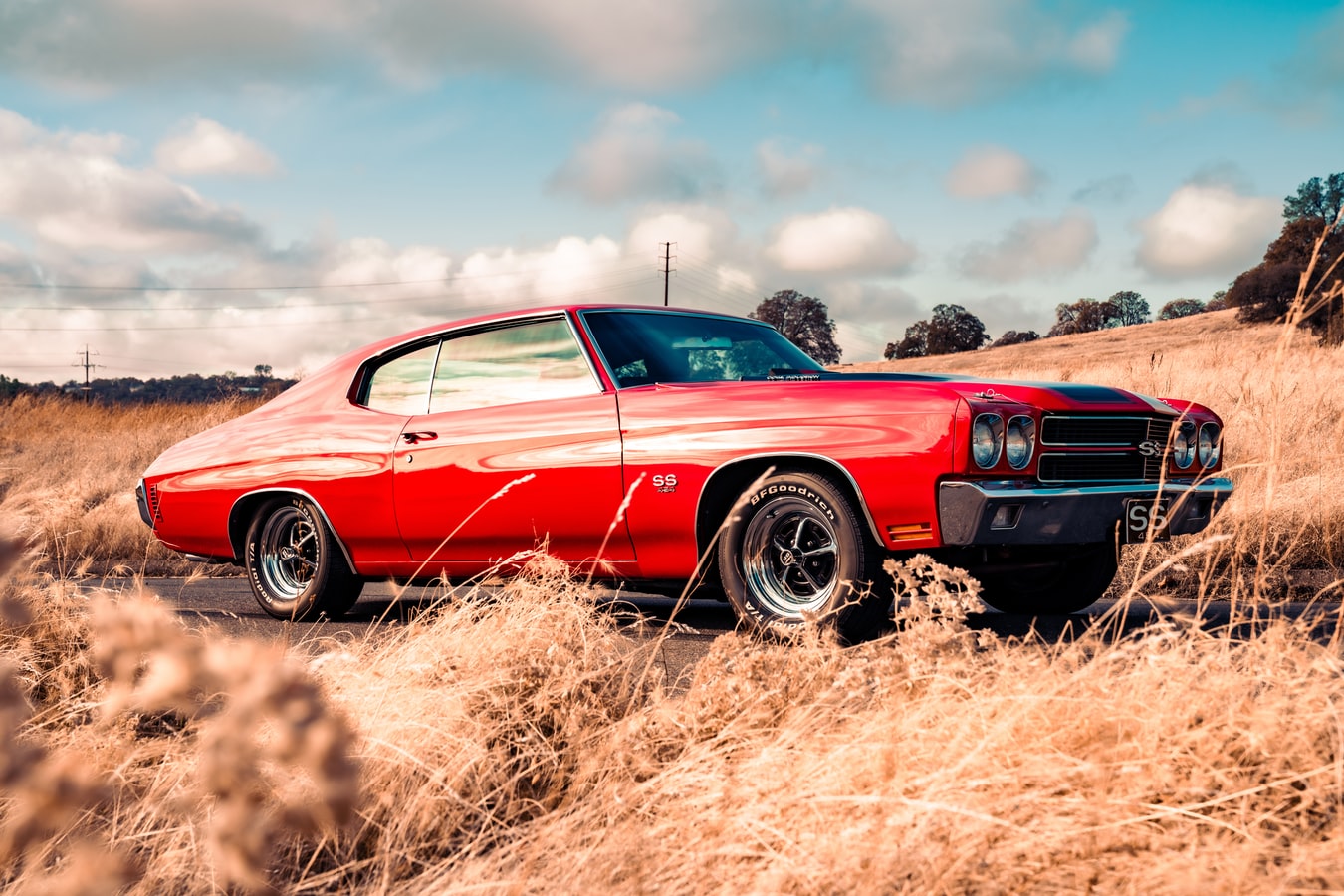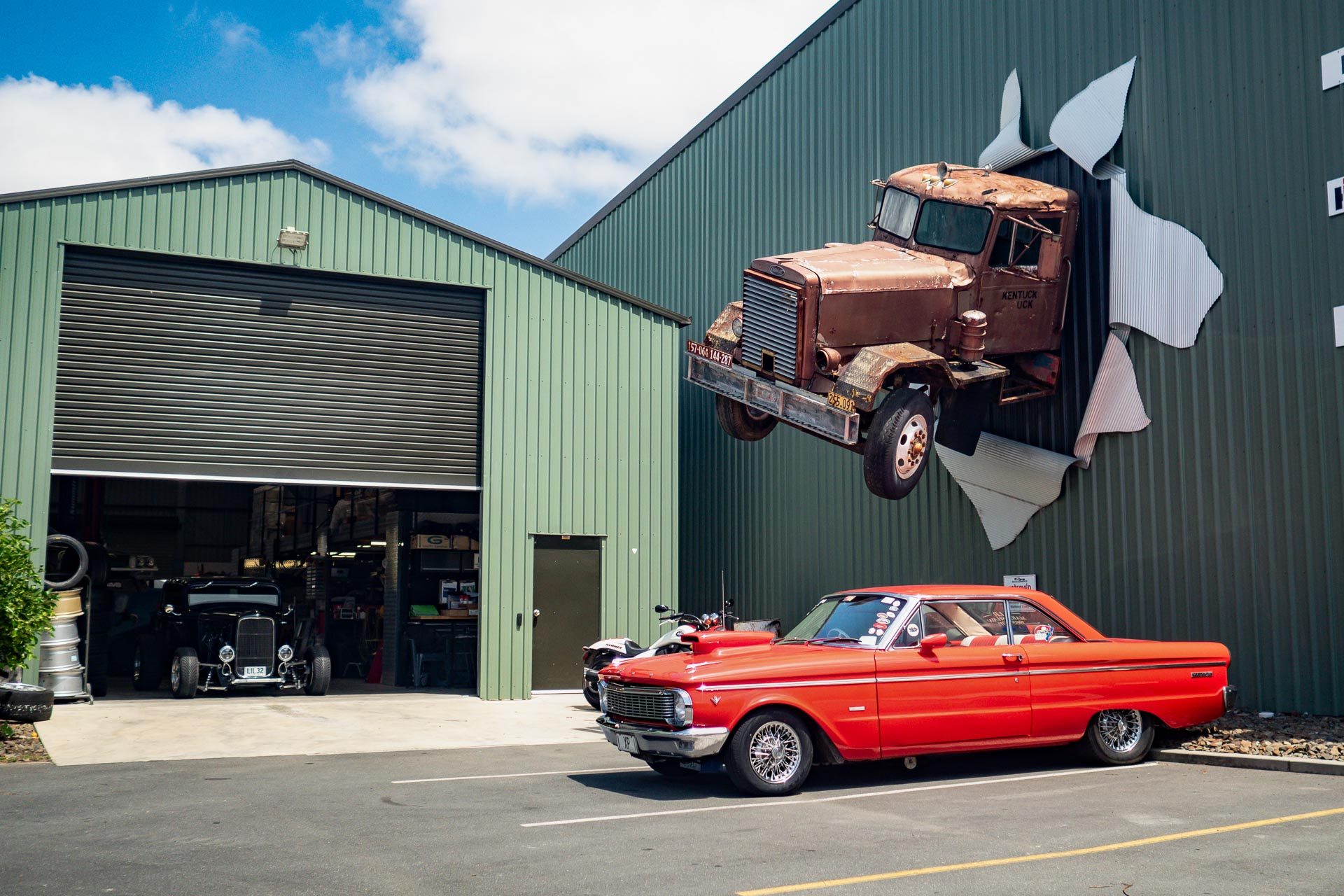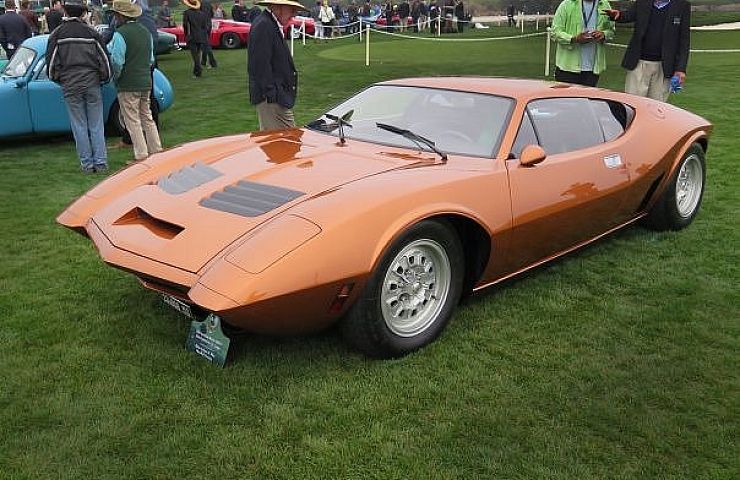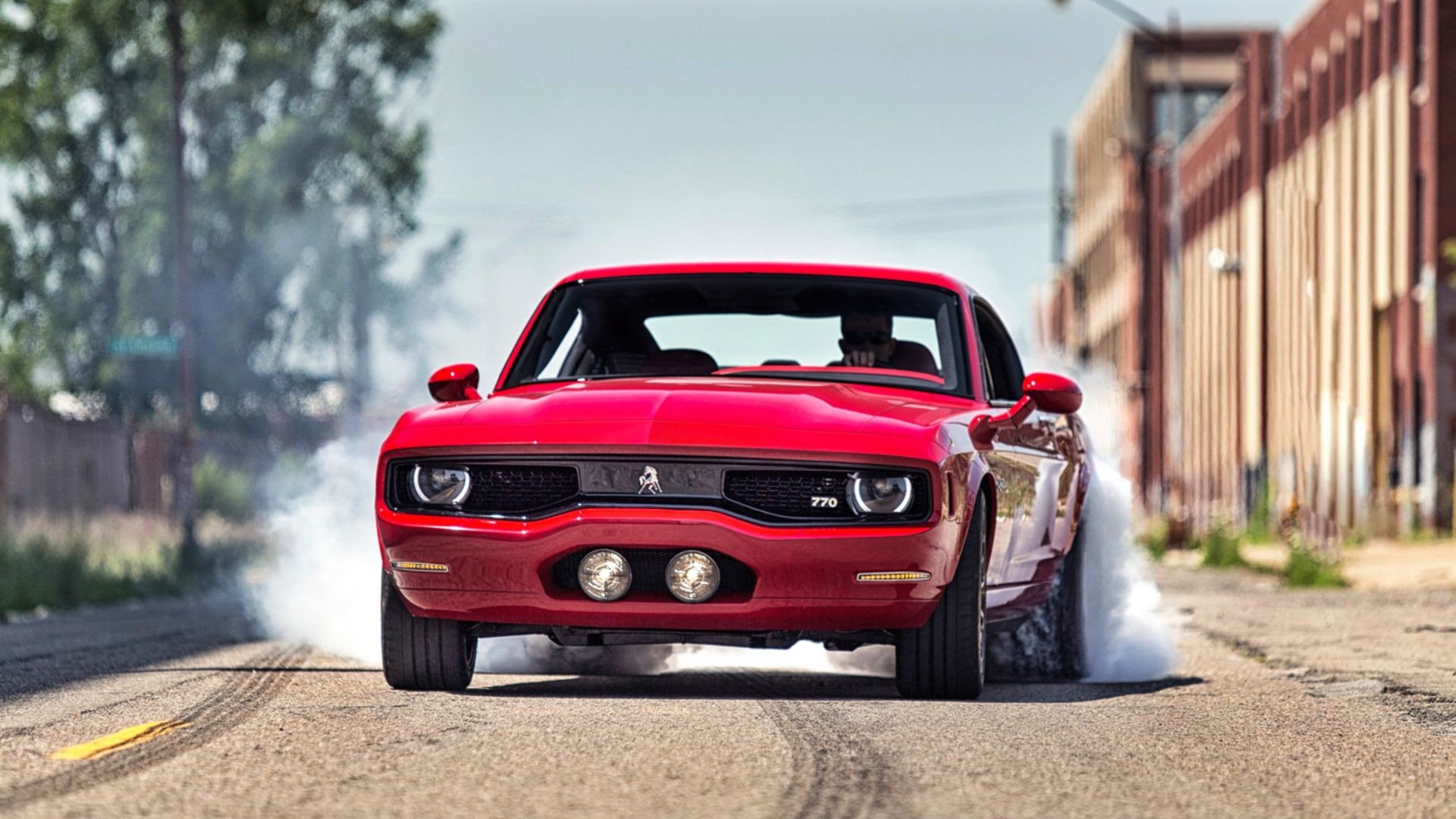Muscle Car History The rumble of a powerful engine, the sleek curves of a well-designed chassis, and the unmistakable roar that echoes through the streets—these elements define what it means to experience the allure of muscle cars. They are not just automobiles; they are icons of a bygone era, symbolizing freedom, rebellion, and raw power. To appreciate the true essence of Muscle Car History, one must embark on a journey through Muscle Car History, a narrative woven with passion, innovation, and unforgettable moments.

The Birth of an Icon
The 1940s: The Seeds of Performance
The roots of Muscle Car History can be traced back to the post-World War II era. As soldiers returned home, America experienced an economic boom, leading to a surge in automobile production and sales. Consumers craved vehicles that offered both style and performance, paving the way for what would soon become a cultural phenomenon.
In the late 1940s, manufacturers began experimenting with high-performance engines in standard production cars. Models like the Oldsmobile Rocket 88, introduced in 1949, are often credited as the first true Muscle Car History. Equipped with a powerful V8 engine, it combined speed and style, igniting the flames of a new automotive trend.
The 1950s: The Rise of the Performance Vehicle
The 1950s saw the automotive industry embrace the concept of speed and performance wholeheartedly. Car manufacturers introduced more powerful engines and performance-oriented features, which captured the imaginations of car enthusiasts. Vehicles like the Chevrolet Corvette made their debut, showcasing the potential for speed and agility.
As racing became increasingly popular, manufacturers recognized the marketing potential of performance cars. The introduction of the Ford Thunderbird in 1955 further propelled the idea of personal luxury combined with muscle, solidifying the foundation for the Muscle Car History craze that would follow.
The Golden Era of Muscle Cars
The 1960s: The Muscle Car Revolution
The true explosion of Muscle Car History occurred in the 1960s. This decade is often referred to as the golden era of muscle cars, as manufacturers embraced the concept with fervor. The landscape of American automotive culture was forever changed as iconic models emerged, each embodying the spirit of the age.
In 1964, Pontiac released the GTO, which is widely considered the first Muscle Car History. Its combination of a lightweight body and a powerful V8 engine set the standard for performance. The GTO’s success sparked fierce competition among manufacturers, resulting in a flurry of new models that would soon capture the hearts of car enthusiasts.
Chevrolet answered the challenge with the Chevelle SS and later the Camaro, while Ford introduced the Mustang in 1964. Each of these vehicles showcased innovative designs, powerful engines, and an undeniable sense of style. The rivalry between brands fueled an automotive arms race, with manufacturers striving to outdo each other in terms of horsepower and performance.
Iconic Models of the Era
The 1960s produced numerous iconic models that have left an indelible mark on Muscle Car History. The Dodge Charger, with its aggressive styling and formidable power, became synonymous with speed. Meanwhile, the Mercury Cougar offered a unique blend of luxury and performance, catering to drivers seeking sophistication along with muscle.
As the decade progressed, the performance of these vehicles continued to escalate. The emergence of the “big-block” engines allowed for astonishing horsepower figures. Cars like the Chevrolet Corvette Stingray and the Pontiac Firebird Trans Am showcased the pinnacle of automotive engineering, drawing fans from all walks of life.
The Influence of Popular Culture
The influence of popular culture during the 1960s further solidified the status of Muscle Car History. Movies like “Bullitt” and “American Graffiti” featured thrilling car chases and iconic muscle cars, captivating audiences and embedding these vehicles into the American psyche. The rebellious spirit of the youth was mirrored in the cars they drove, and muscle cars became symbols of freedom and individuality.
Challenges and Changes
The 1970s: A Shift in the Landscape
As the 1970s unfolded, the Muscle Car History era faced new challenges. The oil crisis of 1973 had a profound impact on the automotive industry, leading to skyrocketing fuel prices and a growing concern for fuel efficiency. Government regulations aimed at reducing emissions and improving safety standards also forced manufacturers to rethink their strategies.
This period marked a significant decline in muscle car production. Many manufacturers were forced to downsize engines and introduce fuel-efficient models, leading to a shift away from the powerful performance vehicles that had defined the previous decade. The iconic Muscle Car History of the 60s began to fade into the background as the focus turned to practicality and efficiency.
The End of an Era
By the end of the 1970s, the golden age of muscle cars had come to a close. Models that had once roamed the streets with power and grace were being retired or significantly downgraded. The Chevrolet Camaro and Ford Mustang underwent transformations that prioritized fuel efficiency over raw performance.
Despite the challenges, the Muscle Car History legacy endured. Enthusiasts held onto their prized vehicles, forming clubs and communities that celebrated the history and culture surrounding these magnificent machines. Restorations became popular, ensuring that the spirit of muscle cars would continue to thrive, even as the market changed.
A Resurgence of Performance
The 1980s and 1990s: The Birth of Modern Muscle
While the Muscle Car History segment languished during the late 1970s, the 1980s saw a revival of interest in performance vehicles. With advancements in technology and a newfound focus on performance, manufacturers began to reintroduce muscle cars that combined modern engineering with classic styling.
The Ford Mustang underwent a significant redesign, offering a new generation of enthusiasts a chance to experience the thrill of muscle cars once again. The Chevrolet Camaro also made a comeback, reinvigorating the rivalry that had defined the earlier era. These models retained the essence of muscle while incorporating modern safety features and improved handling.
The Dodge Viper and Beyond
The introduction of the Dodge Viper in the early 1990s marked a turning point in Muscle Car History. This iconic vehicle combined raw power with cutting-edge design, becoming a symbol of American performance. Its V10 engine and aggressive styling captured the hearts of car enthusiasts, proving that the muscle car spirit was far from extinguished.
As the 1990s progressed, manufacturers began to recognize the growing demand for high-performance vehicles. The Ford SVT Mustang Cobra and the Chevrolet Corvette Z06 exemplified this resurgence, offering exhilarating speed and advanced technology. Enthusiasts reveled in the return of power and performance, sparking a new appreciation for muscle cars.
The Modern Era of Muscle Cars
The 2000s: Embracing Power
Entering the 21st century, the Muscle Car History market experienced a renaissance. Manufacturers sought to capitalize on the nostalgia of muscle cars while integrating modern engineering and performance standards. The resurgence of classic models like the Ford Mustang, Chevrolet Camaro, and Dodge Challenger delighted enthusiasts and newcomers alike.
In 2005, the reimagined Ford Mustang debuted, drawing inspiration from its classic predecessors while incorporating advanced technology and performance enhancements. The Chevrolet Camaro followed suit in 2009, reviving its legendary status and reigniting the rivalry with the Mustang. The Dodge Challenger also made a triumphant return, channeling the spirit of its iconic predecessor.
The Influence of Technology
Modern muscle cars have embraced technology in ways that were previously unimaginable. With advancements in engine design, fuel injection systems, and aerodynamics, these vehicles now deliver performance that far surpasses their predecessors. Supercharged engines and lightweight materials contribute to enhanced speed and agility, ensuring that the muscle car experience remains thrilling.
Additionally, the integration of digital displays, advanced safety features, and connectivity options has transformed the driving experience. While the heart of a Muscle Car History remains rooted in power and performance, the modern era has embraced the need for comfort and convenience.
The Future of Muscle Cars
Sustainability and Innovation
As the automotive industry evolves, Muscle Car History are not immune to the push for sustainability and eco-friendliness. Manufacturers are increasingly exploring hybrid and electric technologies while maintaining the core elements that define muscle cars. The challenge lies in preserving the iconic performance while adapting to changing consumer preferences.
Some brands have already begun to innovate in this direction. The Ford Mustang Mach-E, an all-electric SUV, showcases the brand’s commitment to sustainability while retaining its performance heritage. Likewise, the Dodge Charger and Challenger have announced plans for electrified models that promise to deliver power without compromising the environment.
The Enduring Legacy
The enduring legacy of Muscle Car History continues to inspire new generations of automotive enthusiasts. Car shows, racing events, and online communities celebrate the passion and craftsmanship that goes into restoring and preserving these legendary machines. The thrill of driving a muscle car is a shared experience, transcending time and generations.
As manufacturers continue to evolve, the heart of the muscle car spirit remains steadfast. The roar of a V8 engine, the sleek lines of a classic design, and the exhilaration of performance will forever resonate with those who appreciate the artistry of American automotive culture.
Muscle Car History
Embarking on a journey through Muscle Car History reveals a captivating narrative filled with triumphs, challenges, and the unyielding spirit of innovation. From their humble beginnings in the 1940s to the modern era of high-performance vehicles, muscle cars have left an indelible mark on automotive culture.
They are more than just machines; they embody the freedom and passion of the open road. The legacy of muscle cars is a testament to the enduring love for speed, power, and style. As the industry continues to evolve, one thing remains clear: the allure of muscle cars will forever be a part of the American experience, captivating hearts and igniting dreams for generations to come.





More Stories
Muscle Car Collecting Tips for the Ultimate Car Hoard
Rare Muscle Cars Unveiling Hidden Automotive Treasures
Muscle Car Upgrades Transform Your Ride for the Better